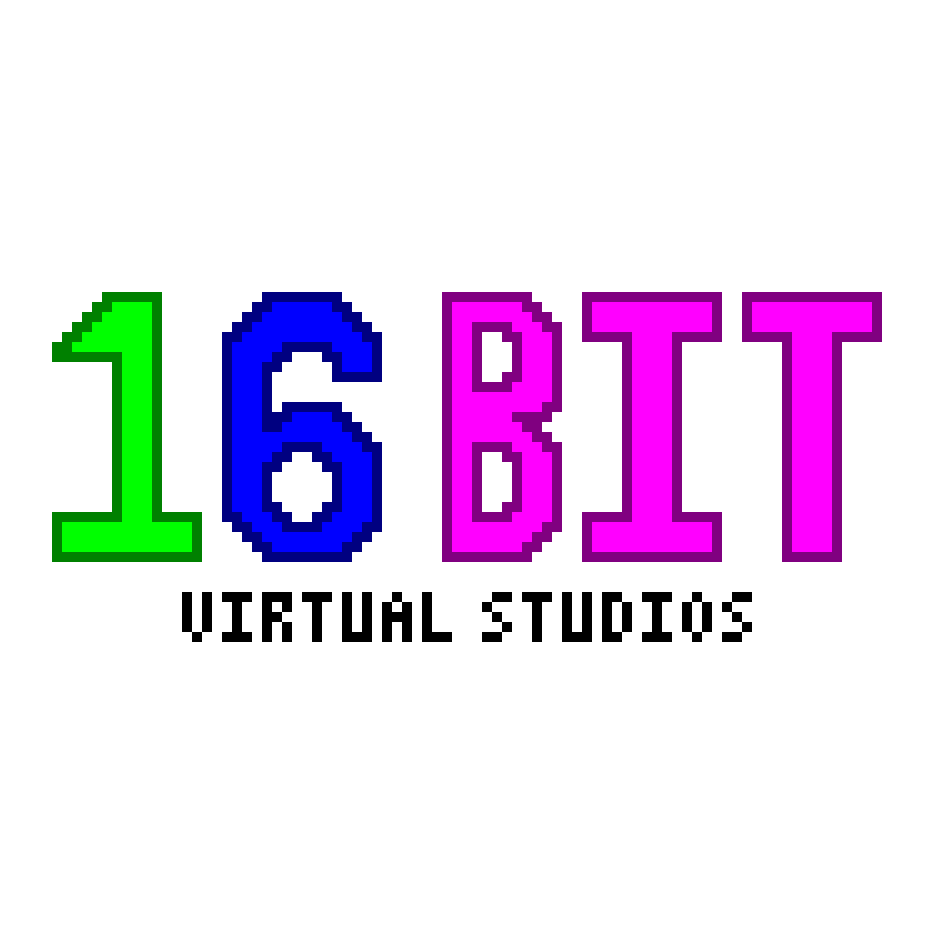Windows has been a thorn in my side for years. But ever since I started moved to Linux on my Laptop and swapping my professional software to a cross platform alternative, I’ve been dreaming on removing it from my SSD.
And as soon as I finish my last few projects, I can transition. (I want to do it now).
Trouble is which I danced my way across multiple amazing distros, I can’t decide which one to land on since the one software I want to test, Davinci Resolve doesn’t work on my Intel Powered Laptop. (curse you intel implementation of OpenCL).
So the opinions of those of you who’ve used Davinci Resolve, Unity/Godot, and/or FreeCAD. I want it to be stable with minimal down time on hardware with a AMD Ryzen 5 1600x and a RTX 3050. Here’s the OS’s I am looking at.
CentOS (alt Fedora)
- Pro: Recommended by Davinci Resolve for the OS, has good package manager GUI that separates Applications and System Software (DNF Dragon), Good support for multiple Desktop Environments I like. Game Support is excellent and about a few months behind arch.
- Con: When I last installed Fedora my OS Drives BTFS file system died a horrific and brutal death, losing all of my data. Can’t have that. And I personally do not like DNF and how slow it makes updating and browsing packages.
Debain (alt Linux Mint DE)
-
Pro: The most stable OS I’ve used, with a wide range of software support both officially in the distros package manager, or from developers own website. I am most familiar with this OS and APT
-
Cons: Ancient packages which may cause issues with Davinci Resolve and Video Games. An over reliance on the terminal to fix simple problems (though this can be said for most linux distros). I personally don’t like APT and how it manages the software.
EndevourOS (alt Manjaro)
-
Pro: The most up to date OS, great for games with the AUR giving support for a lot of software which isn’t available on other distros.
-
Cons: Manjaro has died on me once, and is a hassle to setup right and keep up. EndevourOS has no Package Manager GUI, and is over reliant on the Terminal. Can’t use pacman in a terminal the commands are confusing.
OpenSUSE Tumbleweed
-
Pro: Like Fedora but doesn’t use DNF, good game support
-
Cons: Software isn’t as well supported.
Edit: from the sounds of thing, and the advice from everyone. I think what I’ll do is an install order while testing distros (either in distro box or on a spare ssd) in the following order.
Debain/Mint DE -> OpenSUSE -> EndevourOS -> CentOS
This list is mostly due to stability and support for nvidia drivers.
Mint is the typical way to get a more up-to-date Debian and if you have something against Ubuntu. This community is pretty anti-Canonical so they’ll never recommend Ubuntu…
Oh I don’t like Ubuntu, but unlike this community it’s more an in general distaste for the OS than anything specific.
Mint might do ya then if you want to remain in the .deb system. I ran it for a while and was happy with it. I’m on popos now but it’s based on Ubuntu lts only so it’s not quite as up to date at times.
I think Mint is your best choice. Mint is not Ubuntu, even if the underlying base is based on Ubuntu. It doesn’t have snaps for example, and a lot of the ubuntu fluff and slowness has been cut out. For example, Mint Cinnamon uses 1.2 GB of RAM on a clean boot, but it uses 1.9 GB on Ubuntu-Cinnamon. It’s a cleaner system.
If I’m going mint I’m going mint De since I dislike ubuntu for personal reason
Removed by mod
Manjaro should not even be considered in the modern distro landscape, the story of manjaro is just a series of incompetent mistakes.
While I have my own personal gripes with it, it’s has one of the most robust GUI configurations I’ve seen in any Linux distos. As someone who doesn’t want downtime having a gui for things like Kernel config and systemd, Manjaro has its perks.
Doesn’t outweigh breaking my build for touching AUR, but ther is a reason I consider it.
Sorry, but, no. Pretty much any distro can do all of that perfectly well, the fedoras of the world, the mints of the world, but they don’t break constantly.
I have given manjaro to 3 people and used it myself for many years, i got sick of it because the team is incredibly incompetent and just breaks things all the time, i’ve switched to arch and all of these problems have gone away.
let me give you an example of a design flaw that has caused strife for every single person I have given manjaro, how the kernel is handled.
Manjaro does not let you sudo pacman -S linux, instead, you get linux with the version number as the package, this means for the standard user, your kernel will become outdated, unless you think to go out of your way to update it. This has broken every system of every normal person I have given manjaro at some point, and then i’ve had to go through GREAT lengths to resolve the issue for them, all of which I had to do from a terminal. Updating the kernel should be the default of any sane distro, and I have never encountered another distro that made this such a hassle by default.
https://github.com/arindas/manjarno
You can read this for other examples of how incompetent the team is, i’m sorry but there’s just no usecase for manjaro, if you want a GUI, you should simply use something other than arch, like fedora. I see no advantages to manjaro over arch personally, but if you desperately need a GUI, just use something else instead of trying desperately to hack arch into something that it simply is not.
Manjaro takes the good things about arch, the KISS philosophy, throws that in the trash, adds nothing of value and breaks shit. Endeavoros is the same thing but better in every way, and arch even has an installer now.
Furthermore, if you’re in need of a GUI, you’re probably going to hate when manjaro finally does break and you’re dropped in a terminal with no experience whatsoever, which will inevitably happen.
deleted by creator
The hate is not justified IMHO. I’ve used Manjaro for 5 years now and never had any problems. It just works.
Don’t pick a distro, pick a desktop environment. Look up KDE Plasma, gnome, cinnamon, xfce, etc. Then pick the largest most stable distro that uses that environment.
I’ve given this advice in the past too. I’m probably sticking with Cinnamon, which is why Mint is in the options.
Cinnamon is my favorite so I have mint at home. All the computers at my work have Ubuntu (gnome) and it’s ok but I don’t love it.
Gnome (default) has it’s place for someone who doesn’t want a conventional desktop environment or doesn’t like the contemporaries desktop look a likes. But man, I’m 20+ years of using Windows and it’s the way I like my Desktop Environments.
Do not use Manjaro. It is a known trap. What you can do is install pamac, which is what Manjaro uses for GUI package management. It’s been a hot minute since I’ve used Arch, so here’s a tutorial:
https://itsfoss.com/install-pamac-arch-linux/
Alternatively you could look at Garuda, which is a solid Arch distro. You’ll either love or hate the theme, but that’s easy to change. It also comes with an interactive kernel by default (most distros use a regular kernel build, which works better for servers).
Whatever you do, please please please not Ubuntu. It’s the lowest common denominator. Emphasis on “lowest”. It was good in the past, but Canonical have really lost the plot.
Could you elaborate on what you mean by Manjaro being “a known trap”?
Edit: See my reply for some sources I found.
You’ll have the die-hard “XX is the best distros” and the “distros are irrelevant, choose a DE” answers here. The reality is that it will all boil down to your hardware, use case and willingness to tinker, in that same order.
For example, I love PopOS for laptops with Nvidia cards, only because I am used to the Cosmic version of Gnome PopOS has used all these years (looking forward to the proper Cosmic DE once its out), but for PC (regardless of GPU) I’d rather use Fedora KDE (customized to a Gnome feel) because I find it easy to customize to a very granular degree, and I feel Fedora has the best mix of cutting edge + stability.
As you can see, there’s a whole lot of “I” in my comment. That’s the beauty of Linux, whatever you end up sticking with, you get to make it as YOURS as you want it to be.
Arch derived distros require more carefully maintenance than most other base distros (RHEL and Debian), but are also great to actually learn Linux more deeply. RHEL derived distros, IMO, are a better balance between “it just works” and “I can make this happen”, and Debian based are the easiest to maintain, mainly because it tends to be what the most popular distros out there are based on, which makes for a much larger community for when we hit a brick wall (when, not if).
Bottom line is that I believe you would be better off going the route you mentioned, and going through the pitfalls of each until you find that sweet spot.
And of course, once you’re on that road, come and ask anything you want, most of us are always happy to help if we can.
Oh I knew I cast a wide net when I posted here. Wasn’t looking for which distros were best, but rather common pitfalls in this communities zeitgeist, as well as the 1 or two users who actually use the software I am using and any issues that they came across.
For example Fedora was high on my list of potentials before it was pointed out that it has issues with Nvidia’s drivers. As I am looking for minimal down time/setup it dropped on my list.
I also heard from someone who is using it on Arch which means I have a fallback if my distros of choice fails.
It sounds like you and JJLinux are on the same page. Their advice about hardware, use case, and willingness to tinker is spot on. I might argue that the Davinci Resolve (Studio) use case make these considerations even more important.
I have been using Davinci Resolve on Linux since DR 15 and know the pain you are going through. Although it looks like you have your solution, I would just like to post what works for me and suggest resources just in case it might help. I know the less painful (to me) route of getting it working in a reasonably reliable fashion.
These are the distros that currently work for me for use in professional situations:
Laptop with Intel CPU and Nvidia GPU - Pop OS
Pros - Can install Pop OS version with working Nvidia drivers, Battery life is generally better (still not good when Nvidia GPU in use)
Cons - Updates may involve more work (there is probably a better way to update that I haven’t tried) - I used the Daniel Tufvesson method of install originally on Ubuntu and later on Pop OS - https://www.danieltufvesson.com/makeresolvedeb. Not even sure if I’m doing updates in the easiest way. I have just been redoing the process. It might have changed lately.
The journey with the laptop was dual boot, Ubuntu, Pop. Would not recommend Ubuntu. The usual drivers, audio, and install issues (to be fair I think they are fixed?)
Desktop with Intel CPU and AMD GPU - Endeavour OS
Pros - Can install directly from Aur
Cons - AMD drivers work for everything but DR out of the box. Drivers take some fiddling with AMD but using Archwiki on DR makes it way easier - https://wiki.archlinux.org/title/DaVinci_Resolve. It may not apply to Endeavour but I had conflicts when I installed Blender along side Davinci in Garuda.
The journey with the desktop was Manjaro (nvidia), Garuda (nvidia and then AMD), to Endeavour. Generally won’t recommend Manjaro - it worked OK for me but required fixing. Garuda worked (Zen Kernel) until Blender install + OS update (dependencies), was always looking at either Garuda (works well with Aur install of DR and games) or Endeavour. Endeavour OS works…it feels less bloated and open to tinkering. It does need a bit more tinkering, but Pamac and research on arch wiki will help a lot.
There are more pros and cons but these are the ones that helped me to make a choice.
Sorry for wall of text when you may already have the best solution. I have not tried any of those methods that others have suggested so maybe post how it goes! I definitely would be interested in your experience.
Honestly your feedback was what I was looking for. While I could trial and error this myself, I would like to skip the hassle if possible.
From what it sounds like, while Debain is stable as a OS, but it might be a lot of trouble to install Resolve. Thank you for the link for the makeresolvedeb project, didn’t know this existed, and I find it funny how Black Magic is trying to treat linux like WIndows.
I was hoping I could avoid Arch, but it does sound like the safest bet for getting it to work.
I can probably dig around and see if Resolve works well in OpenSuse. But from the lack of Forum and debate around it, I am guessing it’s niche.
Welp my install order doesn’t change, but I now have a new challenge. Don’t update the live image packages, install resolve, then update the system. If Resolve lives I can keep the distro.
Each way seems like it is difficult but it will work! Determination is the key. It really sucks when you can’t even get the splash screen to work on launch. I had to completely rebuild after Blender dependencies broke DR on Garuda Linux. It was easier to rebuild with Endeavour OS and use all the Arch wiki documentation. I was worried about the driver problems but that was with an AMD GPU and OpenCL drivers. Sometimes you luck out with the hardware you have and it will work right away (I did with the Laptop, Pop OS, Nvidia and makeresolvedeb). It is worth it in the end though! Post an update if you can.
Daniel Tufvesson…if you are on Lemmy. Thanks for your work.
And a big FU to Adobe and subscription models.
This is why I’ve been spending Kore time in Lemmy than Mastodon. Anyone can provide good help, as long as it needs to be, without worrying about having to split the whole thing.
You two just gave me the courage I needed to try some Arch based distros again. My experiences with Garuda and Endeavour were hideous, so I never looked back.
I have an Intel + Nvidia laptop (S76 Gazelle 16), so I’ll do it on that one. My work PC is AMD with integrated graphics, and Fedora 40 KDE has been flawless so far.
Thank you, for real.
I was hoping your thread would make it to the top of the post. I gave my opinion in your thread because it seemed to be the only one that didn’t run with the usual “Intro to Linux Distros” advice. You gave practical advice that listened to the question. @[email protected] looks to be Linux savvy but just wanting to avoid frustrating pitfalls. So thanks back to you!
I hope this time around Arch is a better experience. When Garuda breaks it seems to break hard! Endeavour seem easier to fix. I lasted about a month with just the terminal then installed Pamac. One EOS laptop is still terminal only tho.
Awesome. Then that’s the word. I’m going to go with Endeavour again, this time I’ll do it over the weekend and stick to it for a few weeks even if it breaks. I have to confess that, in both cases, I jumped ship afyer just 3 or 4 attempts to fix broken stuff and those turning into a slight headache, and that’s no way to learn. And, you are falling short by saying that Garuda “breaks hard”, for me it was just frustrating. On Endeavour I recall being able to roll back some of the damage I made by just removing some software I should have read more about before installing, but Garuda is unforgiving 🤣🤣
 Getting ready to make this happen. I know, I said “during the weekend” but I just could not help myself. I may need therapy for my ECDHM (Extreme Case of “DistroHopping” Madness) 🤣
Getting ready to make this happen. I know, I said “during the weekend” but I just could not help myself. I may need therapy for my ECDHM (Extreme Case of “DistroHopping” Madness) 🤣Hahaha. This is so awesome… I do the same thing. Just jump in and stay up all night getting it done instead of waiting for the weekend. Definitely do an update!
Wao, I’d forgotten how easy and straightforward it is to use yay. This is going to be awesome. Thanks again.
Debain (alt Linux Mint DE) Pro: The most stable OS I’ve used, with a wide range of software support both officially in the distros package manager, or from developers own website. I am most familiar with this OS and APT Cons: Ancient packages which may cause issues with Davinci Resolve and Video Games
I don’t use Davinci Resolve but I do play videogames, I build my own desktop for it and I use Linux MX (Debian), it’s rock solid.
“Ancient packages” are not a problem with backports, there are also flatpacks if some backports are not enough for you, or DEB packages directly from software developers (I manually install a couple of those).
The only games you will have problems with are those implementing invasive DRM, but that’s not a “Debian” problem, Linux in general doesn’t support that kind of DRM (not yet at least), tho I personally don’t mind since I think DRM is stupid and I’ve always tried to avoid it.
That was my consensus with software like Lutris and adding Wine’s packages
Yeah Lutris has fantastic scripts that do everything for you, also the Steam store is really good even if you don’t buy from them, checking that a game is verified for Steam Deck is a guarantee it will work on any other Linux PC.
I didn’t add which GPU I have but I saw you asking in other posts so: currently NVIDIA 4070 with proprietary drivers.
I’ve been using NVIDIA on my Linux desktop for over a decade, it always worked very well tho you have to install proprietary drivers (opensource ones are not good enough if you use software that requires performance), Linux MX has a script (menu item) to install them, very easy.
In all this time, only a couple of times I had serious problems with a kernel update (something that can happen with any distro), but Linux MX always keeps boot entries for the last 3 kernels so when it happened I just booted with a previous one and waited a few days for devs to fix it (no tinkering on my part required).
NVIDIA cards have problems on laptops, those I only buy Intel, but a dedicated card on desktop is good.
I was a happy Ubuntu user for more than a decade and I agree that it’s a good beginners distro. I am now using Manjaro, which is also very good. In fact, Manjaro might even be more beginner friendly because it support Flatpak out of the box.
I used manjaro when I first started, but have had mixed success since then. Some criticisms here about shipping broken userspace (at least with their mobile OS): https://drewdevault.com/2022/08/18/PINE64-let-us-down.html
But, ubuntu is great for beginners, and i’ve always had good success with debian, although I’d point beginners to find an installer with non-free firmware until you know what’s going on
You sound like you’d be pretty capable, I personally use arch, less perceived limitations. Endeavour is the better choice between endeavour and manjaro.
MX if you just want a os with beautiful theming.
Either way good luck.
Mint or MX for a standard windows converter distro?
Web surfing and gaming.
Depends on the person, I didn’t get on well with many distros, I like tinkering, arch afforded me that.
Some people are happy jumping in the deepend and having converter distros may alienate some new users.
Is there much different between MX and Debain Stable it’s built on?
Not sure to be honest, my experience with MX and Debian are limited, I like how MX looks, had no issues using in in the small amount of time I had used MX linux and I’m a sucker for good theming
I’m just gonna say, go with something Debian based. MX Linux is very solid.
Manjaro has also died on me in the past, because they fuck with the packages, EndeavorOs is rock solid and you will thank yourself when you can install stuff like spotify, discord, teamspeak with a single yay command
I would go with Fedora or Mint, both for their software support and stability. Personally I like Mint over Fedora, I think it has a larger selection of software packages but I could be wrong.
Btrfs is more stable nowadays, I wouldn’t worry about that. And anyway you can choose XFS or Ext4 during installation while setting up your disk partitions.
If you are worried about a particular software package being too old, try installing FlatPaks instead, or use the Nix or Guix package managers which can co-exist easily with any other package manager.
I’m personally using Mint for this exact purpose. It just works and I don’t have to think about it much.
I love Mint for the simplicity. My only complaint is the lack of Wayland support for cinnamon.
Pop_OS is a good choice for a gaming machine, it was perfect for like 4 years until I upgraded my 1080TI for a 7900XTX and the Mesa version was too old to run it at the time so I switched to Manjaro.
Personally I hate most Arch based distros with a burning passion. Like I have used arch wiki to install Arch at least 3 times after it had shit the bed during an update. Now if I need to open a terminal to install a distro I’m not installing it. I just wish the people maintaining Manjaro weren’t so incompetent and also include common codecs (h264 and h265) in Mesa like every other distro.
It doesn’t matter that much, but I like Arch… it’s a bit of a pain to install if you are new to Linux though. I find it more stable than Manjaro though.
Your decision probably should depend on if you like KDE or Gnome and if you want the latest software or something a bit more stable.
You could also try the live version first before you install it to make sure everything works as intended.
deleted by creator
I don’t think that’s true, but I do love Slackware also… used it for many year. Maybe you just didn’t realize you have gotten better.
For the DE I’ve settled on Cinnamon. I like KDE plasma, but it’s missing features, gnome has everthing but I don’t like its interface.
Have you tried kde plasma 6, I have always wanted to use kde but gnome had a better experience for workspaces until 6 came out and fixed all that I wanted.
Yeah I have an arch in a
bumVM (stupid apple auto correct) to toy with new release like this. KDE 6 feels like KDE 5 with some slight tweaks.Doesn’t sound like praise but considering how buggy KDE was in Wayland before this is a massive improvement. Still not my cup of tea and Libre Office still has issues with separate icons in the task bar.in Wayland.
Gotta throw my vote in for tumbleweed. Its IMO the best distro to get the latest packages while still maintaining stability. Their built in roll back feature is great.
Software not being well supported is kinda a sticking point. Though honestly its becoming less and less of an issue each day. Flatpaks are available for almost everything, distrobox covers the rest. I really haven’t run into any situation that prevented me from doing what I wanted. I’ve been using it for a few years now across my desktop, laptop, and my computer at work. Suse is enterprise Linux after all, its still got great support
That’s why it’s on this list, but I’m more looking to see if Resolve has issue with it.
What software is not supported? I could find everything I needed working great in the community repos using http://software.opensuse.org/
If you are using this pc for work I’d guess you want the most stable system possible. Just pick Debian stable with backports, stick with the official repo + flatpak and you won’t have it fail on you unexpectedly ever.
My issue with just choosing debain is I don’t know if I’m sacrificing Resolve compatibility by choosing it.
This is where Distrobox comes in. Simply spin up a tiny containerized Fedora, install Resolve. Everything else on your system can be rock solid Debian.
This gives you the best of both worlds.
Hm, I never used resolve so I wouldn’t know about that. I guess you will have to try it out and see if it works fine or not, installing debian 12 doesn’t take much time.
You can always use Docker and run it on a Rocky Linux image.











